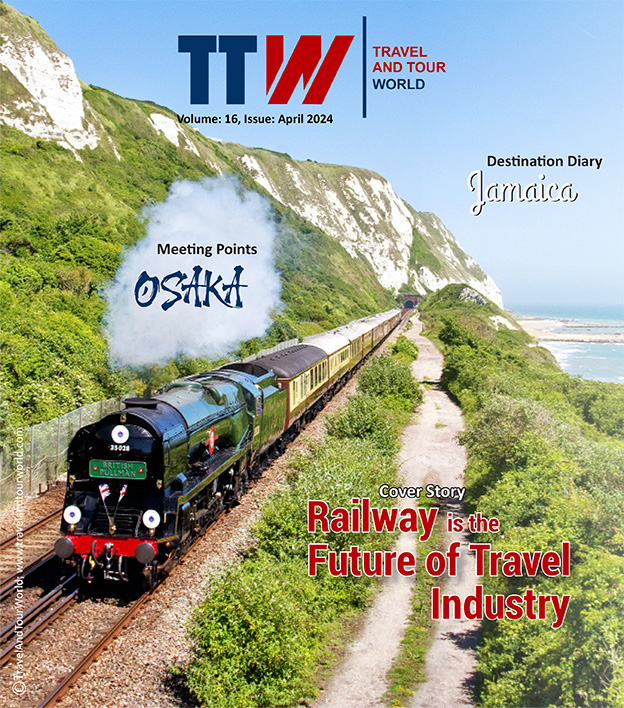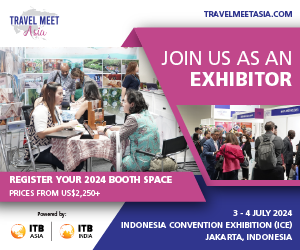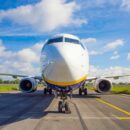
In an exclusive interview with Travel And Tour World, Leslie Thng, Chief Executive Officer, Scoot adds his insights how Scoot together with Singapore Airlines shows its commitment to the 2050 net zero goals and the introduction of sustainable aviation fuel to make earth more pollution free.
Travel And Tour World: Do you have any plans to introduce sustainable fuel flights or any addition of new flight fleets?
Leslie Thng: Scoot, together with the Singapore Airlines Group (SIA), has committed to the 2050 net zero goal, and with our relatively young fleet (6 years on average) that are more fuel-efficient, the Group is already at a level of carbon intensity some airlines have set as their 2030 target.
We believe that having a new generation of aircraft in our fleet is one of the most efficient ways of reducing carbon emissions. We recently announced the addition of nine new Embraer E190-E2 aircraft. Scoot will be the first Singapore carrier to operate the E190-E2. By 2026, Scoot envisions to retire its old aircraft and move to a new generation fleet, including the new E190-E2. This will enable the airline to continue operating a modern and fuel-efficient fleet.
Sustainable Aviation Fuel (SAF) is the key lever to achieve net zero emissions by 2050, given that they can reduce carbon emissions by up to 80% on a life-cycle basis compared to conventional jet fuel. Over the last two years, we have continued to work with stakeholders and partners to ramp up our use of SAF. In July 2022, SAF was uplifted on Singapore Airlines and Scoot flights. The use of the SAF over the one-year pilot is expected to reduce about 2,500 tonnes of carbon dioxide emissions.
In addition, as part of SIA’s Carbon Offset Programme, we have also rolled out a voluntary carbon offset portal to encourage our customers to offset their carbon footprint on their flights. A donation amount will be calculated based on the estimated carbon generated by the customer’s trip, to be paid by the customer. These contributions will go towards supporting a group of specially selected projects across Asia that reduce or prevent greenhouse gas emissions and bring benefits to the communities that the projects are situated in.
Travel And Tour World: Elaborately tell us about the expansion plans by Scoot in aviation sector.
Leslie Thng: As travel restrictions continue to ease around the world, we expect travel demand to remain robust in the foreseeable future. Ultimately, consumers need to connect with loved ones, explore new cultures and create memorable experiences. We are committed to mounting more frequencies and ramping up our recruitment efforts to support this steady growth in the demand for travel.
Scoot currently flies to 65 destinations, across 15 countries and territories that are available for booking as of March 2023.
India remains one of Scoot’s important markets and we are committed to connecting travelers conveniently to and from India with other parts of our network including destinations in Australia, Indonesia, and Malaysia. Today, Scoot has resumed 100% of its pre-Covid passenger services to India including Amritsar, Coimbatore, Hyderabad, Tiruchirappalli, Trivandrum, and Visakhapatnam. We currently operate 44-times weekly between Singapore and India.
We will continue to remain nimble in adjusting our network and flight frequencies in tandem with evolving developments and opportunities in India.
Travel And Tour World: How Scoot Airlines is programming with the new technological updates in aviation sector?
Leslie Thng: Since the start of the pandemic, we have been working on improving business processes to gain efficiency, as well as enhancing our operational excellence by upgrading key infrastructure.
For example, we have invested in a new flight planning system that allows for better modelling to improve efficiency, reduce fuel burn and improve sustainability. We have also adopted a new revenue management system with improved pricing capabilities to support 6th freedom traffic and interline travel.
On the customer experience front, we’re trialing a revamped website that supports ease of use and self-service capabilities. Additionally, we launched a live chat function to allow customers to have their queries addressed in real time. We have also strengthened our survey ecosystem, including additional survey touchpoints to gather customer feedback for improvement.
Travel And Tour World: How Scoot Airlines is providing best experiences to the passengers in terms of fleet expansion?
Leslie Thng: Scoot currently operates a mix of Boeing 787 Dreamliners and Airbus A320-family aircraft, with an average fleet age of 6 years.
As a low-cost carrier, we believe in empowering our customers to curate their flights based on their preferences, from baggage to meals and other ancillaries. On our Boeing 787 Dreamliners for example, customers can opt to enjoy ScootPlus, an upsized Scoot experience with wider and more comfortable seats, in-flight meals, and WiFi.
Our plans to add nine new Embraer E190-E2 aircraft also support our network growth strategy and enhance our connectivity within the region. The first aircraft is scheduled for delivery in 2024, with the other eight to be progressively introduced by the end of 2025.
Expanding Scoot’s fleet affirms our commitment to offer even more travel opportunities for our customers at the same great value.
Travel And Tour World: Tell us about the crews and pilot training facility in Scoot Airlines?
Leslie Thng: As part of our training and development mantra, all our pilots are put through a structured and rigorous ab initio pilot training programme that spans almost 2.5 years.
Cadet pilots must go through a Multi Crew Pilot License (MPL) Training to become qualified First Officers – a process which may take up to 2 years. They will undergo training at one of the top flying schools for pilots globally, Singapore Flying College (SFC).
Upon completion and obtaining their license, cadet pilots will learn to operate either the Boeing 787 Dreamliner or Airbus A320-family aircraft. The training curriculum is in accordance with the regulatory processes set out by the Civil Aviation Authority of Singapore (CAAS).
Scoot cabin crew go through eight-weeks of intensive training programme, designed to equip them with the skills required. These include brand induction, safety and emergency procedures, service procedures, product training, and Scootitude training – engaging our customers through surprise inflight activities such as special holiday celebrations.
As part of the Singapore Airlines Group, Scoot leverage on the existing training infrastructure for our pilot and cabin crew. Close collaboration with SIA also provides us with the ability to leverage group capabilities in the design of effective pilot and cabin crew training and assessment to ensure the highest standards and levels of safety.
Pilot flight training for our Boeing 787 Dreamliners and Airbus A320-family aircraft are done at the SIA Training Centre (STC) and Airbus Asia Training Centre (AATC), respectively. These existing training centres were made possible through joint ventures between Singapore Airlines and Singapore CAE Flight Training (SCFT), and between Singapore Airlines and Airbus respectively.
Our cabin crew use the facilities at SIA Training Centre (STC) for Safety Emergency Procedures (SEP) training and STC also provides the necessary equipment and tools to further support our cabin crew training regime.
Thursday, April 25, 2024
Friday, April 26, 2024
Thursday, April 25, 2024
Thursday, April 25, 2024
Thursday, April 25, 2024
| Cookie | Duration | Description |
|---|---|---|
| cookielawinfo-checkbox-analytics | 11 months | This cookie is set by GDPR Cookie Consent plugin. The cookie is used to store the user consent for the cookies in the category "Analytics". |
| cookielawinfo-checkbox-functional | 11 months | The cookie is set by GDPR cookie consent to record the user consent for the cookies in the category "Functional". |
| cookielawinfo-checkbox-necessary | 11 months | This cookie is set by GDPR Cookie Consent plugin. The cookies is used to store the user consent for the cookies in the category "Necessary". |
| cookielawinfo-checkbox-others | 11 months | This cookie is set by GDPR Cookie Consent plugin. The cookie is used to store the user consent for the cookies in the category "Other. |
| cookielawinfo-checkbox-performance | 11 months | This cookie is set by GDPR Cookie Consent plugin. The cookie is used to store the user consent for the cookies in the category "Performance". |
| viewed_cookie_policy | 11 months | The cookie is set by the GDPR Cookie Consent plugin and is used to store whether or not user has consented to the use of cookies. It does not store any personal data. |





















